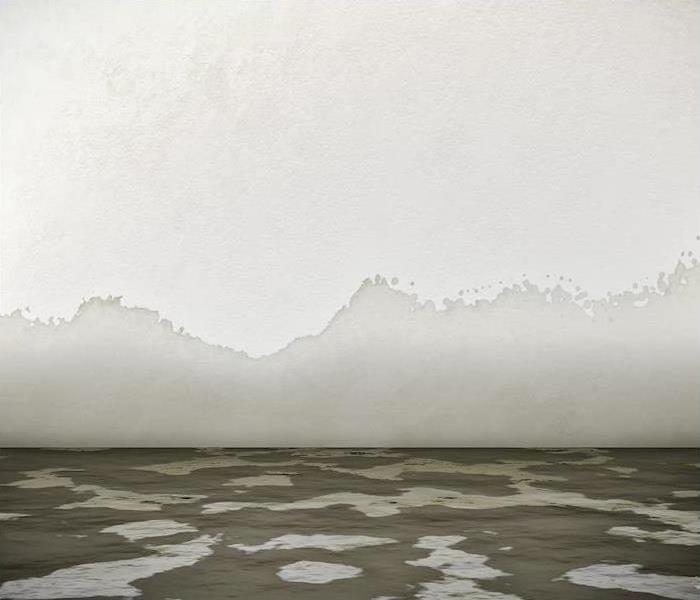Signs of Water Damage
8/5/2022 (Permalink)
It may not seem like it but even the smallest plumbing or roof leak can create major water damage to your home. It can cause damage to your furniture and other possessions, some of which will have to be thrown out.
Often by the time you realize there’s a danger of water damage, it’s too late and the damage has already occurred or is occurring. For these reasons, it’s important to stay alert for any signs of unwanted water accumulating in your house. Here are some tips to help you stay vigilant and detect if any water damage may occur in your home.
Paint
If paint on the walls is blistering, bubbling, and/or flaking, that’s one of the main tell-tale signs that there’s water somewhere you don’t want it. The same goes for loose or peeling wallpaper. In these cases, there is likely water accumulating in the wall and is possibly already eating away at the structural integrity of the home.
If you’re looking around for a new home and you notice that the current owners of the home have recently painted select parts of the house such as just the ceiling or just one wall, they could be attempting to hide signs that there’s water damage.
Kitchen or Bathroom Sink
Probably nothing gives more telling signs that you might have water damage than kitchen or bathroom sinks. If a faucet base is coming loose or the caulking is starting to deteriorate, it could be a sign that you have water damage. This is especially true if the loose faucet or deteriorating caulking is combined with a laminate countertop detaching from its base or if dampness is mysteriously found under the sink cabinet or vanity.
Floors
Floors made of wood such as hardwood, engineered wood, or laminate will show water damage by the planks buckling and sticking up higher than the surrounding planks. Another sign is that they have shifted out of place. In a tile floor, if the tiles are loose or are damp for hours after anyone has used a bathtub or shower, that can be a sign of water damage.
Doors and Windows
If doors or windows gradually become harder and harder to open or close, it could be caused by water absorption causing the wooden frames to swell.
Walls and Ceilings
If any drywall is stained, usually yellow or brown, it’s likely been caused by water damage. It might also have swollen edges and seams. Any wooden wall trim, such as baseboards or crown moldings, that start crumbling could be doing so due to water damage.
Cracked Foundation
Cracks in a house’s foundation are a serious potential result of water damage. For residents of northern states, a cracked foundation could be caused by frost heave, an upward swelling of soil caused by the presence of ice. But if it’s not during the winter or in warmer climates like Florida, a cracked foundation is typically a sign of water damage.
Odors
Sometimes it’s not what you see but what you smell that alerts you to the existence of water damage. If there’s a musty mildew odor apparent in the home, it’s not because every older home eventually gives off the scent. You should find where the odor is coming from because it’s one of the signs of water damage. Another smell that could alert you to water damage is an acrid smell like that of wet diapers.
Sometimes it’s not what you smell but the reaction of your nose that alerts you that there’s water damage in the house. If your nose is itching, dripping, and/or you’re sneezing and allergies are not the cause, it might be because you’ve got water damage.
Sounds
If it sounds like there’s running or dripping in the house and nobody is using the plumbing, that’s a sign that there’s water somewhere you don’t want it to be. In this case, you should find where the sound is coming from so you can find the location of the leak.
Bills
If you’re all of the sudden paying more for your water bill and you’re not using any more water than usual, that means that water is running somewhere in the house. If it’s not a leak from a faucet that’s easily noticeable, you need to find where the water is coming from.
Water damage is one of the worst situations a homeowner will face. It can damage the building’s structure, and can damage your possessions, sometimes irreparably. If you’ve suffered water damage, contact SERVPRO to remediate the problem.

 24/7 Emergency Service
24/7 Emergency Service
